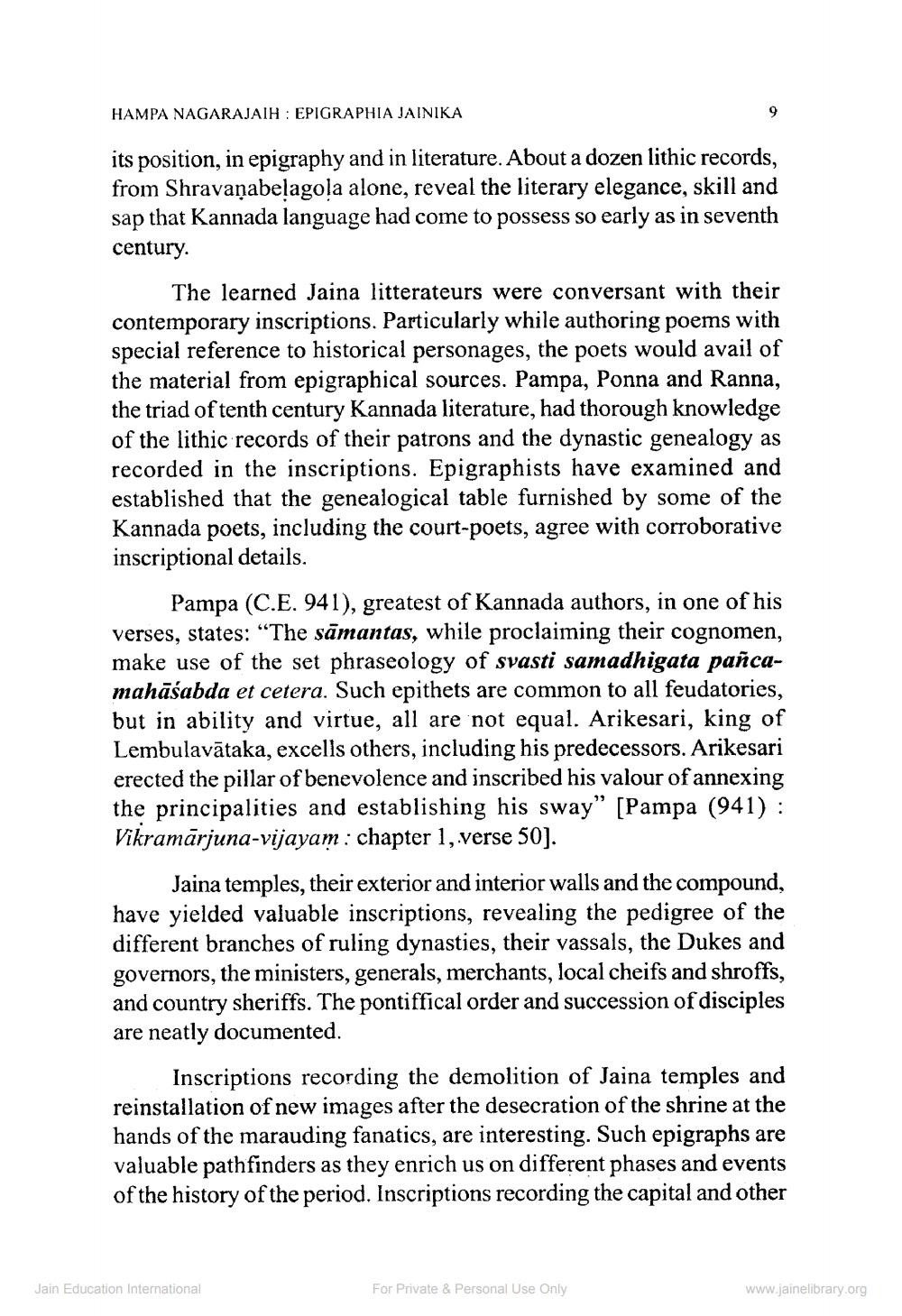________________
HAMPA NAGARAJAIH: EPIGRAPHIA JAINIKA
its position, in epigraphy and in literature. About a dozen lithic records, from Shravanabelagola alone, reveal the literary elegance, skill and sap that Kannada language had come to possess so early as in seventh century.
The learned Jaina litterateurs were conversant with their contemporary inscriptions. Particularly while authoring poems with special reference to historical personages, the poets would avail of the material from epigraphical sources. Pampa, Ponna and Ranna, the triad of tenth century Kannada literature, had thorough knowledge of the lithic records of their patrons and the dynastic genealogy as recorded in the inscriptions. Epigraphists have examined and established that the genealogical table furnished by some of the Kannada poets, including the court-poets, agree with corroborative inscriptional details.
Pampa (C.E. 941), greatest of Kannada authors, in one of his verses, states: “The sāmantas, while proclaiming their cognomen, make use of the set phraseology of svasti samadhigata pañcamahāśabda et cetera. Such epithets are common to all feudatories, but in ability and virtue, all are not equal. Arikesari, king of Lembulavātaka, excells others, including his predecessors. Arikesari erected the pillar of benevolence and inscribed his valour of annexing the principalities and establishing his sway” [Pampa (941) : Vikramārjuna-vijayam: chapter 1, verse 50).
Jaina temples, their exterior and interior walls and the compound, have yielded valuable inscriptions, revealing the pedigree of the different branches of ruling dynasties, their vassals, the Dukes and governors, the ministers, generals, merchants, local cheifs and shroffs, and country sheriffs. The pontiffical order and succession of disciples are neatly documented.
Inscriptions recording the demolition of Jaina temples and reinstallation of new images after the desecration of the shrine at the hands of the marauding fanatics, are interesting. Such epigraphs are valuable pathfinders as they enrich us on different phases and events of the history of the period. Inscriptions recording the capital and other
Jain Education International
For Private & Personal Use Only
www.jainelibrary.org




